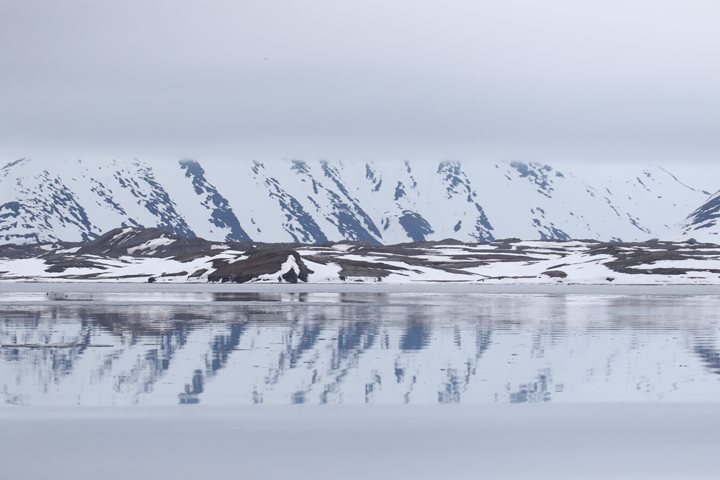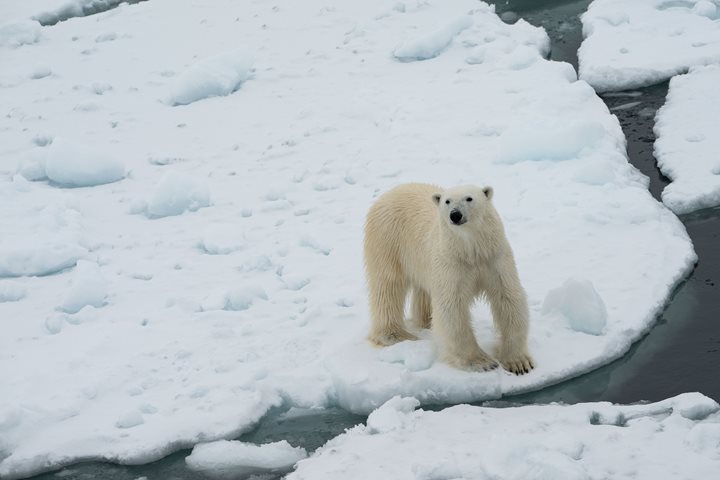Myggbukta, Eastern Greenland
Our last day exploring eastern Greenland is a glorious one. We start the day with one final landing, knowing full well that the National Geographic Explorer will be heading out into the pack ice this afternoon on a course north then east toward Svalbard.
We go ashore at the site of an historic Norwegian radio and weather station, in an area called “Hold with Hope.” Named by Captain Henry Hudson, this reportedly is the oldest place name appearing on maps as far back as 1618. The bay itself is called Myggbukta, or “Mosquito Bay,” no doubt for good reason, as there are vast ponds and wetlands spreading out across the soggy tundra as far as the eye can see. Lucky for us there is a mild breeze blowing, so the pesky insects are not too bothersome.
The weather station is of historical interest, having been constructed in 1922. Tragically, the team of men that built the first cabin never made it home to Norway, their ship lost at sea, presumably trapped and crushed in the ice. The station was manned continuously between 1926 and 1942, dismantled during WWII. Operations resumed after the war and continued until 1959. Since then, it is used intermittently by trappers and scientists, fully stocked and maintained for emergencies. Surely through the years it has saved many lives, providing shelter during snowstorms that can last for days in this part of the world.
If there’s one animal that brings back visions of the Ice Age, it’s the musk ox. Its contemporaries back in the Pleistocene included woolly mammoths, mastodons, and saber-tooth tigers, all of which became extinct about 10,000 years ago. The last remaining indigenous populations of musk ox are here in Northeast Greenland National Park, having been heavily hunted in other areas. Musk ox are funny looking animals, with long shaggy hair obscuring their short legs, making them appear as dark boulders at a distance. Up close they have large horns, which the males use during the rutting season. The musk ox is a nervous animal, probably because of hunting by man and predation by wolves. Amazingly, they can smell you from a great distance and will scamper off if you are upwind, but they eventually circle back as if curious. We had some excellent views taking our time, and with extra effort to approach from a downwind direction. We also encountered numerous skulls and skeletons scattered around the tundra, each surrounded by a garden of arctic wildflowers. The cycle of life continues here in the far north.
Back on board we enjoyed a relaxing afternoon at sea crossing the Fram Strait, that is, unless you are the captain. Navigating through the pack ice takes great skill and years of experience. Using ice charts and satellite images, Captain Skog and his officers plot a route to avoid the greatest concentrations of multi-year ice. Even then, the ship shuddered from time to time when we had no choice but to slowly navigate through stringers of pack ice drifting down from the vast Arctic Ocean not far to the north.
Adventure. An expedition is all about adventure and exploring the unknown. What will tomorrow bring? Please stay tuned…






